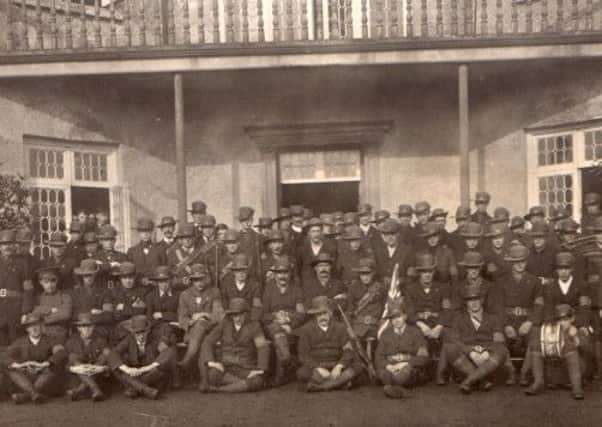Ballymena 1914 - Philip Orr’s book offers ‘New Perspectives’


Authored by Carrickfergus historian Philip Orr, whose earlier books include The Road to the Somme and Field of Bones: An Irish Division at Gallipoli, ‘New Perspectives’ was first published by Mid-Antrim Museum in 2011.
With the 100th anniversary of the signing of the Ulster Covenant looming, Orr was tasked by the Mid-Antrim Museum service to trawl through the incredible local archive of the original Ulster Volunteer Force documentation which provides a vaulable perspective on the formation of the anti-home rule force.
Advertisement
Hide AdAdvertisement
Hide AdHe was also able to draw on the local newspaper archives with the ‘Ballymena Observer’, ancestor title of the Ballymena Times being a primary source.
In the pre-war era, the debate on Irish independence was easily the most important political ‘hot topic’ of the time, bitterly dividing the Westminster Parliament and bringing the nation to the brink of all-out civil war.
In his preface to the book, Orr explains just how important the UVF archive proved to be.
“It tells a detailed story of unionism in Mid-Antrim from 1911 to the foundation of the U.V.F in January 1913. It was a time of political rallies, legal disputes, fiery sermons and day-to-day evidence of the rapid move towards militarisation of the pro-Union project.”
Advertisement
Hide AdAdvertisement
Hide AdThis comment sets the scene for two of the over-arching themes of the book - firstly, the extreme politicisation of the pre-war years in Ballymena and secondly, the inextricable linking of religion and politics at this time, even at the basest of levels.
Of course, the key focus of the text is on the impact of the ongoing political and community tensions within the ‘Mid-Antrim’ area. Orr admits that there was some difficulty in categorising the boundaries of this region with any precision and instead chose the area in which the local battalion of the U.V.F held as its zone of influence and catchment area, that is, ‘very much centred on Ballymena but extended westwards towards the River Bann and also eastwards towards the Antrim Glens.’
Thus the area dealt with by New Perspectives can be considered as ‘an area extending almost ten miles south from Ballymena and up to fifteen miles northwards from the town’, though much material does feature relating to other parts of Ulster, particularly in an effort to portray the nationalism to which the unionists of the time were so vehemently opposed - as well as due to a scarcity of information regarding nationalist activity in the Ballymena area.
The book reveals details of the training methods of the local UVF battalion which engaged in ‘field days’ and numerous parades but perhaps the most interesting revelation is the existence of what can only be described as a ‘doomsday plan’ which would be implemented if the worst case scenario for unionists ever developed.
Advertisement
Hide AdAdvertisement
Hide AdOf course, the scheme was never put to the test due to the outbreak of the First World War, a conflict in which Irishmen of all political and religious backgrounds were to serve with distinction. Many of those who trained with rifles smuggled in from Germany would join the British army and serve with the 36th (Ulster) Division which was largely founded around the kernel of the existing UVF units.
Orr’s work of 147 pages is liberally laced throughout with pictures of highly relevant places, events and items from the period, affording the reader a crucial grasp of the dominant moods of the time, with images such as that of the Braid Water Mill and of the Empire Day celebrations serving to highlight the prevailing attitudes instilled within the Mid-Antrim community